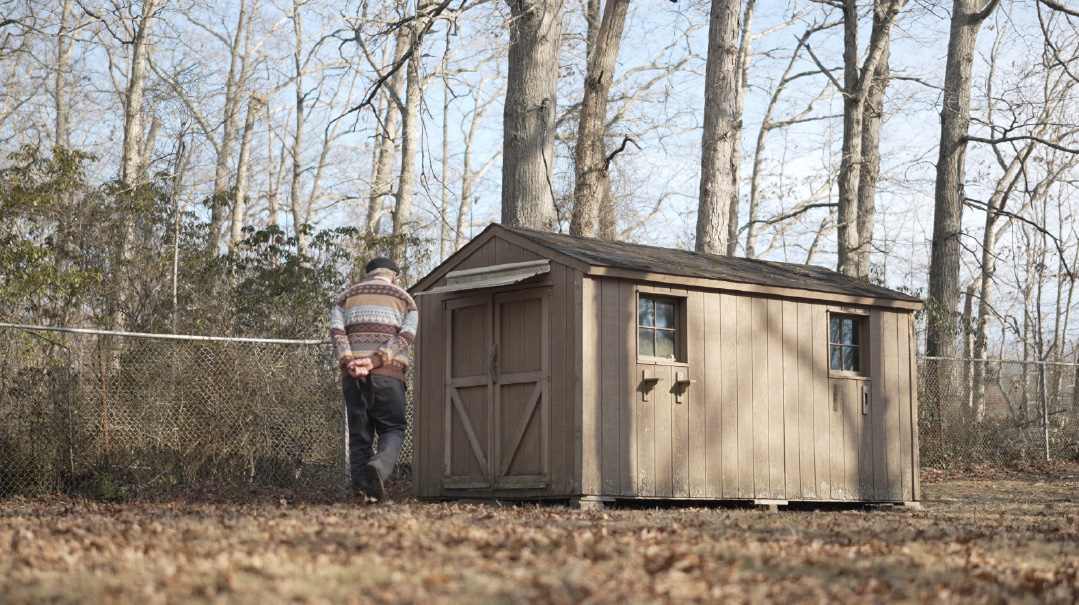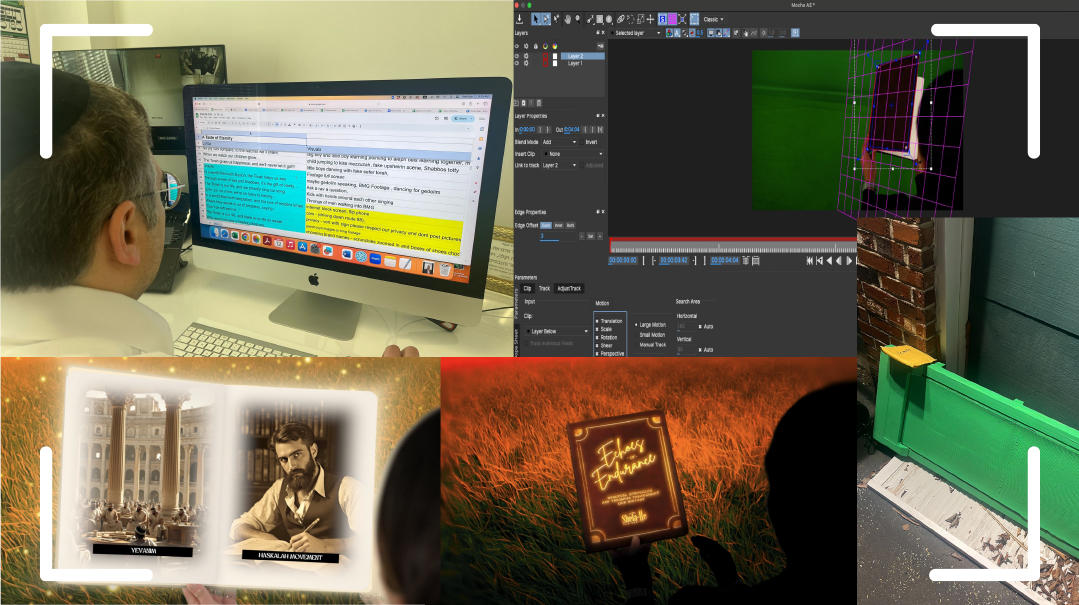Client: Culinary Depot
| October 24, 2023A sales rep-turned-actor, on-screen graphics, and a video-within-a-video highlight a commercial kitchen supplier’s new approach to customer service

Client: Culinary Depot
Objective: Create a feature video showcasing their store and client base
Film locations: Culinary Depot in Spring Valley, New York
Project Deadline: March 2021
The Proposal
Pinny Frieder, director of e-commerce at Culinary Depot, reached out to our office for a quote. In a brief intake call with our office manager, he explained that they had been selling commercial kitchen products for several years, so their business model was to simply take phone or website orders and then ship the equipment from their warehouses. But recently, Culinary Depot had opened a supercenter in Monsey to allow for a more interactive experience, and they wanted a marketing video. Their idea was to show footage of the store as well as narration about what they offer to play on the company website.
When senior production manager Moshe Niehaus called Pinny back, it wasn’t simply to provide a quote and arrange logistics.
“Why do you want to make a video?” he asked bluntly.
The question took Pinny by surprise.
“You know, to help promote the supercenter, like I told your office?” Pinny replied.
“Can you be a little more specific?” Moshe probed.
After some back and forth, Moshe understood that Culinary Depot wanted the video to highlight their new model of giving their customers an immersive experience in which they could try out products in the store’s test kitchen.
With the objective clarified, Moshe suggested a more strategic route.
“If you want prospective customers to sense that warmth, the superior customer experience, don’t tell them about it — show them! Instead of a detached narrator, have actors going through the actual process. This will get your point across visually, which will be much more impactful.”
Pinny agreed, and we sent Culinary Depot a proposal for the updated approach.
Acting the Part
Our plan was to have several actors come to the store to play the parts of people in need of commercial kitchen equipment; they would go through the new and improved customer experience.
“I don’t think we need to bring in an actor for the salesperson,” Culinary Depot CEO Michael Lichter told us. “We have an actual customer service rep who can pull it off.”
We were a little hesitant, I have to admit. This would be a central role in the feature — the rep would be the “face” of the new and improved customer experience. Many people like to think they can act, but then they freeze when they’re facing the blinking red light of the camera. On the other hand, if the rep was good enough, having an authentic person doing the job she does every day can be much more powerful than an actor trying to portray her.
We tentatively agreed, though we had a backup plan just in case: one of our “customers” — who were all professional actors — could always step into that role. Our reservations were unnecessary, because not only was Culinary Depot’s rep comfortable in front of the camera, but her personality and genuine warmth really shone through, bringing energy and authenticity to her role.
Real People
In addition to our charismatic salesgirl, we featured several other real people — the owner and two administrators — but for the most part, the other roles were filled by actors. Culinary Depot had told us it was important to highlight the diversity of their customer base, as well as the range of businesses, because they service high- and low-end establishments in all areas and neighborhoods. The first box was fairly easy to check; when we selected our actors from the website, we made sure to cast a variety of people.
However, the second requirement was a little trickier, how would the viewer know what line of business the customer-actor was in? Should we script in the lines, “Hi, I’m Joe, a sous chef out in Manhattan”? That wouldn’t come across as natural, especially if all of our customer-actors would recite variations of that sequence several times in a row.
We were chewing the issue over one morning when Moshe Niehaus had a brainstorm.
“What if the actors don’t share their background verbally, but we just show it? Let’s put a small graphic on screen as they come into the scene with a short bio: name, location, and industry.”
It was a great idea, as it allowed us to get the information out there without having to make the dialogue sound stilted.
Once we were placing the graphic, Moshe had some fun writing a “favorite quote” for each customer, such as “Bake the world a better place,” and, “You can’t make a bad deal with a good person.” Aside from keeping the video entertaining, it was a subtle way of making the actors more three-dimensional. They would have only short speaking parts, so giving them this “personality” enables viewers to identify with each one in their limited screen time.
Keeping It Real
Culinary Depot wanted us to feature a testimonial from a real previous customer — and they even had someone in mind: Meir Hirschorn, owner of Fireside, a steakhouse in Rockland County. But how could we include the testimonial without disrupting the flow of our video?
The feature we had in mind was comprised of two parts: customers on the showroom floor trying out equipment, and the corporate side of the business where larger purchases were negotiated in Culinary Depot’s spacious conference room. A testimonial fit neither section smoothly.
Oftentimes, clients have good ideas for their productions, but it’s important to look at the bigger picture and make sure those elements work for the whole production. The cohesiveness of the video, we explain, is more important than any one segment.
In this case, however, we were able to accommodate their request without sacrificing the flow. The supercenter’s conference room has a large display screen on the wall. In the corporate half of the feature, we planned a scene in which a culinary sales member was making a pitch to a large skilled nursing facility purchaser.
“You’ll be going through paperwork and discussing options with the purchaser, right?” we asked. “How about also showing a short clip of the Fireside testimonial on that display screen as part of your sales presentation?”
It was one of those ideas that just makes the video better all around, because not only does it seamlessly fit in the testimonial, but it also makes the sales scene more dynamic.
Fireside’s owner was happy to share his positive feedback, but he couldn’t commit to coming to our shooting location. As a “video within a video,” however, we had the freedom to film him at his restaurant. Which leads us to another benefit: having the Fireside facade behind Mr. Hirschorn as he spoke told the story of a successful business patronizing Culinary Depot more eloquently than any script. Location, Location, Location
Culinary Depot also asked us to highlight the convenient location of their store near some major highways in Spring Valley and only a short distance from urban centers like New York City and Westchester. Though we did incorporate this into the salesgirl’s introductory speech, we wanted to get this point across visually as well. We used two tricks to get the message out there in a more subtle fashion: we incorporated the customers’ locations on their bios, so the viewer could see that people from those cities frequent the supercenter. We also had our VFX (special effects) department build a custom animation over a satellite image of the area, highlighting the nearby highways and the routes one would take to get to the store.
Callback
The video had several clearly defined scenes, so to help our editing department sort through all of the takes, we used something called a clapperboard: those small black slates with white lines, (you know them from any standard video recording scene). We write the scene and take number on the slate, and as soon as the camera starts rolling, I go next to the actor and clap the slate. The visual with the scene and take number allows anyone reviewing the footage to clearly see which scene belongs where. The clapping sound also helps us sync the audio in postproduction, as there are multiple audios recording live, and having a distinct sound that you can easily locate and match makes for a smooth process.
We did this when Covid was still a big concern, and many of the actors showed up in masks. They removed their masks during the actual shoot, but anyone not in the scene, including our staff, wore a mask — especially when I got up close with the clapperboard.
(Originally featured in Mishpacha, Issue 983)
Oops! We could not locate your form.







